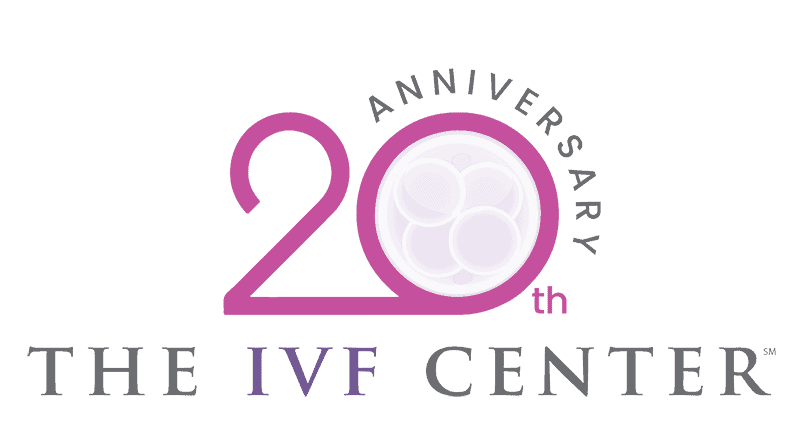When researching fertility options, we understand you may run across terms you are unfamiliar with. To use our glossary of fertility terms, simply select the first letter of the word you are searching for you and you will be taken to the appropriate entry.
A
Anti-Sperm Antibody Testing
Sperm MAR (Mixed Agglutination Reaction) determines the presence or absence of antibodies in the sperm sample itself.
Artificial Insemination
The injection of semen into the vagina or uterus other than by sexual intercourse.
Assisted Reproductive Technology (ART)
The technology used to achieve pregnancy in procedures such as fertility medication, artificial insemination, in vitro fertilization and surrogacy.
B
Balanced Family or Family Balancing
Couples who already have at least one child of a particular sex and are interested in having another child of the opposite sex.
C
Chromosomal Abnormalities
A missing, extra, or irregular portion of chromosomal DNA.
Chromosomal Analysis
During the preimplantation stage Fluorescent In-situ Hybridization (FISH) is used and has the potential to reduce the number of trisomic and monosomic pregnancies (e.g. Down’s syndrome), increase the pregnancy rates in women over age 40, and reduce embryo loss during pregnancy.
Chromosomal Translocations
A chromosome abnormality caused by rearrangement of parts between nonhomologous chromosomes.
Conceive
When a sperm successfully fertilizes an egg and the woman becomes pregnant.
Cryopreservation
Is a process where cells, whole tissues, or any other substances susceptible to damage caused by chemical reactivity or time are preserved by cooling to sub-zero temperatures.
D
Diminished Ovarian Reserve
Refers to the decrease in the number of eggs a woman produces and the quality of those that remain.
E
Egg Donation
Eggs received from a known or anonymous female donor.
Embryo
An unborn, but developing child in the early stages that shows potential for development.
Embryo Biopsy
Part of PGD used to evaluate the genetic material of the embryos created through in vitro fertilization (IVF). Cells are removed from each developing embryo for genetic analysis.
Endocrinology
The study of the medical aspects of hormones, including diseases and conditions associated with hormonal imbalance, damage to the glands that make hormones, or the use of synthetic or natural hormonal drugs.
Endometrial Biopsy
A procedure done to take a small tissue sample from the lining of the uterus, called the endometrium. The tissue is then examined under a microscope for abnormal cells, or the effects of hormones on the endometrium.
Endometriosis
A condition where tissue from the lining of the uterus implants in other places of the body, usually in the abdomen and on the ovaries.
Endometrium
Uterus.
Erectile Dysfunction or Impotence
An inability to achieve intercourse resulting from erection issues.
F
Fertility Specialist
A reproductive endocrinologist — a physician who practices a subspecialty of obstetrics and gynecology called reproductive endocrinology and infertility (REI).
Fluorescent In-situ Hybridization (FISH)
A laboratory technique for detecting and locating a specific DNA sequence on a chromosome.
Fructose Screening
Evaluates the level of sugars in the semen of the male partner.
G
Genetic Testing
Examining your DNA, the chemical database that carries instructions for your body’s functions to reveal changes or alterations in your genes that may cause illness or disease.
H
Hysterosalpingogram (HSG)
A specialized office x-ray procedure that determines if the fallopian tubes are open and if the uterus is of normal shape.
Hysteroscopy
A method of examining the inside of the uterus using a small, lighted telescope (hysteroscope).
I
Infertility
Not getting pregnant despite having carefully timed, unprotected sex for one year.
Intracytoplasmic Sperm Injection (ICSI)
An in vitro fertilization procedure in which a single sperm is injected directly into an egg.
In Vitro Fertilization (IVF)
Used to treat mild sperm abnormalities in males and fallopian tube or ovulation abnormalities in women.
L
Laparoscopy
An outpatient surgical procedure to view the pelvic organs by using a small, lighted telescope (laparoscope) inserted through the abdomen at the belly button.
M
Male Infertility
Infertility attributed to a man’s reproductive system.
Menopause
A natural decline in reproductive hormones when a woman reaches her 40s or 50s.
Miscarriage
Spontaneous loss of a pregnancy before the 20th week, most often before the 12th week.
Monosomic Pregnancy
A genetic condition caused by an abnormality on one of your sex chromosomes. Having 45 instead of 46 chromosomes. Found only in females.
O
Oocyte
Egg
Ovarian Hyperstimulation Syndrome
A medical condition affecting the ovaries of some women who take fertility medication to stimulate egg growth. Most cases are mild, but rarely the condition is severe and can lead to serious illness or death.
Ovulation
When a mature egg is released from the ovary, pushed down the fallopian tube, and is available to be fertilized.
Ovulation Dysfunction
Occurs when a woman is not able to conceive with her own eggs or is no longer ovulating.
P
Polycystic Ovarian Syndrome (PCOS)
The most common hormonal disorder of women in their reproductive years. The classic symptoms are irregular periods, hair growth in a male body pattern and weight gain.
Pre-Embryo
A human embryo or fertilized ovum in the first fourteen days after fertilization, before implantation in the uterus has occurred.
Pre-Implantation Genetic Diagnosis (PGD)
Technology that is combined with IVF to allow for the determination of the pre-embryo(s) gender
Premature Ovarian Failure
The depletion of a woman’s supply of eggs prior to age 40.
R
Recurrent Pregnancy Loss (RPL)
Having experienced two or more spontaneous pregnancy losses.
S
Semen Analysis
Refers to looking at semen under a microscope to identify any signs of abnormality.
Surrogacy
A woman who is artificially inseminated with the father’s sperm. She then carries the baby and delivers it for the parents to raise.
T
Tubal Pregnancy
A pregnancy in which the fertilized egg implants outside the uterus.
Trisomic Pregnancy
A genetic condition caused by an embryo having 47 chromosomes instead of 46. Results in Down syndrome, Edward syndrome and Patau syndrome.
U
Ultrasound
A method to view your reproductive organs using high frequency sound waves that bounce off of body structures to create pictures on a monitor.
Unexplained Infertility
The failure to determine a specific cause of infertility even after a thorough evaluation of both the male and female partners.
Uterine Anatomic Abnormality
A type of female genital malformation resulting from an abnormal development of the Müllerian duct(s) during embryogenesis.
Uterine Fibroids
Non-cancerous growths that develop from smooth muscle tissue.
V
Varicocele
A dilation of veins in the scrotum surrounding a testis usually felt like a “bag or worms.”
Recent Practice News
Why The IVF CenterSM Is Unique
At The IVF CenterSM we recognize the process of IVF can at times be overwhelming.
To address this issue, we have an IVF Nurse available 24/7 to answer questions, guide you through the process, and provide emotional support. We also offer a Reproductive Health Psychologist to help couples develop their best coping strategies along their journey.
Success of the IVF Program at The IVF CenterSM is due to our scientific and technological excellence coupled with our compassionate and highly personalized approach to patient care.
The IVF CenterSM is committed to each couple’s success by providing individualized and supportive care along the way. We consider each couple part of our family as we attempt to help them create their own.







